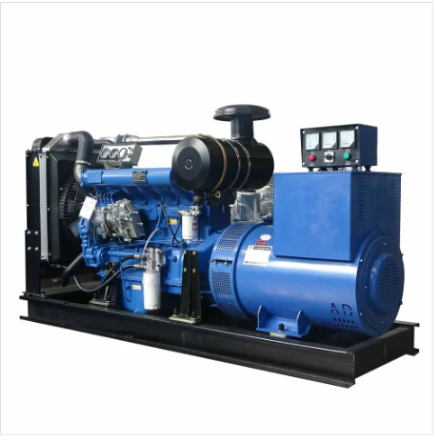Understanding Power Requirements for Your Diesel Generator Set
Calculating Total Load and Equipment Wattage
When figuring out what size diesel generator will work best, start by making a list of all the electrical equipment that needs backup power. Think beyond just the obvious stuff like lights and heating systems. Air conditioning units, refrigeration appliances, and even office computers often get overlooked but consume significant power when running. For each item on the list, check both regular operation wattage and startup surge requirements based on manufacturer specs. Many folks forget to account for these startup surges which can really throw off calculations. There are online tools available that help calculate these values, though they vary in accuracy depending on how detailed the input data is. After compiling all these numbers, sum them up to get an approximate total load figure. This number serves as the foundation for proper generator selection since generators need enough capacity to handle peak demands without getting overloaded or failing to meet basic requirements during critical moments.
Differentiating Between Starting and Running Wattage
Knowing the distinction between starting (or surge) wattage versus running wattage makes all the difference when picking out a diesel generator. Most appliances and motors actually need more power at startup than they do once running normally. This initial burst of power is what we call starting wattage. For items with heavy moving parts like refrigerators or AC units, checking their specific startup needs becomes really important to avoid overloading the generator. When figuring out surge wattage requirements, it helps to run through some basic math formulas. Getting these numbers right means the generator will deliver enough juice when those big appliances kick on, instead of leaving everyone in the dark during those crucial first few seconds.
Converting kW to kVA for Accurate Generator Sizing
Getting the right size generator means knowing how to convert between kW (kilowatts) and kVA (kilovolt-amperes). The kW value shows what actual power gets consumed, whereas kVA measures what appears to be flowing through the system. This difference matters when picking out generators. To figure out the needed kVA rating, apply the formula kW equals kVA multiplied by power factor. Most installations work fine with a power factor around 0.8, which helps bridge the gap between theoretical efficiency numbers and what actually works on site. Understanding this distinction makes all the difference when choosing equipment that will handle those exact power needs without letting anyone down during critical moments.
Evaluating Generator Sizing and Capacity Needs
Matching Load Size to Generator Output
Getting the right sized generator for what needs powering makes all the difference when it comes to how well it works and what it costs over time. Before buying, check out those sizing charts that match up with exactly what equipment will be running. Nobody wants to go overboard on size because bigger isn't always better. Way too big a generator ends up working below capacity most of the time, burning through extra fuel and wearing itself down faster than needed. We've seen plenty of cases where people spent more money in the long run by going too big just because they thought bigger was safer. Pay attention to these details during selection and the generator will perform better while saving money on fuel costs month after month.
Standby vs. Primary Power Source Considerations
Choosing between standby and main power systems really comes down to knowing exactly what we need. Runtime matters a lot here too along with how reliable the system needs to be overall. Standby units usually activate when there's a blackout situation so they work best for occasional power failures. Primary generators though run nonstop all day every day like backup hearts for essential operations. Think about how often blackouts happen where we live and what kind of equipment depends on constant electricity supply because those details matter for picking the right generator type. And don't forget about rules regarding emissions and noise pollution either. Local regulations vary quite a bit across regions, so checking if our chosen generator complies with both state laws and industry norms makes sense from both environmental protection standpoint and basic common sense perspective.
Incorporating Safety Margins for Optimal Performance
Adding around 20 to 30 percent extra capacity beyond what calculations suggest really boosts how well a generator works. This kind of buffer helps when there are surprise spikes in power needs or when loads fluctuate unexpectedly, stopping the generator from getting overloaded. Often these load changes happen because machines start up suddenly or old systems just aren't running efficiently anymore. Keeping this safety cushion means avoiding all sorts of problems that come with undersized generators like constant tripping and complete system shutdowns. Plenty of industry reports show what happens when people skip on proper safety margins - expensive downtime and damaged equipment are common outcomes. So building in some extra capacity isn't just smart planning, it makes sense for anyone wanting their power generation setup to work reliably day after day.
Assessing Site Conditions and Installation Factors
Analyzing Space Constraints and Accessibility
Looking at site conditions for a diesel generator involves checking space limitations and how accessible the area actually is. Before installing anything, someone needs to walk around the potential location and see if there's enough room for both the generator and whatever maintenance work will require later on. Make sure there's good air flow all around too since this affects how well it runs and keeps things safe from overheating. Also important are those local rules about where generators can sit relative to buildings and property boundaries. Getting this wrong could lead to some serious headaches down the road with permits or neighbors complaining. Taking all these factors into account makes finding the right installation spot much easier and saves trouble during regular upkeep.
Environmental Impacts on Diesel Generator Efficiency
The way a diesel generator performs really depends on what kind of environment it's operating in. Things like how hot it gets, elevation changes, and moisture levels all play into whether the generator runs efficiently or not. Take high temps for instance they tend to cut down on power output, same goes for being at higher altitudes where there's less oxygen available. Humid air actually messes with the cooling system too, making it work harder than normal. Following manufacturer recommendations becomes essential when dealing with various weather patterns and geographical locations. Real world testing has revealed some pretty big differences in how well generators run depending on their surroundings, which is why smart operators always check local climate data before installing equipment. Getting familiar with these environmental effects allows companies to keep their power supply reliable no matter what Mother Nature throws at them during operation.
Considering Fuel Efficiency and Operational Costs
Balancing Fuel Consumption with Power Demands
Picking out a diesel generator means finding the sweet spot between how much fuel it burns and what kind of power we actually need. Smart folks know that managing loads properly makes all the difference here. Take those newer generator models with load sensing tech built right in they automatically adjust their fuel burn depending on what power level is needed at any given moment, which cuts down waste pretty nicely. Some field tests back this up showing savings of about 25% when running at less than full capacity. Also worth noting are the typical fuel burn numbers across various sizes. Smaller units tend to guzzle roughly 0.4 gallons for every kilowatt hour produced when working hard, whereas bigger machines might eat through closer to 0.6 gallons per kWh. These kinds of figures really matter when trying to match performance needs against what fits within our budgets.
Long-Term Maintenance Requirements for Diesel Generators
Keeping diesel generators running at peak performance really comes down to regular maintenance work. Most facilities need to set up some kind of maintenance schedule covering things like checking for wear and tear, changing oils when needed, and replacing filters as they get dirty. Getting genuine OEM parts matters too, along with having someone qualified on hand who knows what they're doing. We've seen plenty of cases where cutting corners here leads to expensive fixes later on. Studies from industry groups show well maintained generators tend to burn fuel better, sometimes saving around 20% compared to neglected units. That kind of improvement adds up fast across months and years of operation. For businesses relying on backup power, sticking with proper maintenance isn't just good practice it's basically table stakes these days if they want to keep costs under control while maintaining reliability.
Consulting with Industry Experts for Custom Solutions
Leveraging Professional Guidance for Complex Needs
When dealing with complicated electrical requirements or big installations, getting help from professionals really matters. Consultants who specialize in areas where constant power supply is critical do important work during site evaluations, figuring out loads, and picking the right generators. Collaborating with these industry pros helps create systems that run better and save money over time. Take Craig Bouwer at WEG Africa as an example he always points out how knowing exactly what operations need makes all the difference in decision making. People working in the field regularly talk about how consulting experts pays off in multiple ways, mainly by avoiding expensive mistakes down the road and keeping systems running strong for years to come.
Integrating Advanced Technologies like Hybrid Systems
Combining diesel generators with renewable energy sources creates hybrid power systems that are proving their worth in cutting down operational expenses and boosting system reliability. When companies install these mixed systems, they typically see lower fuel usage and fewer emissions, all while keeping the lights on during outages or disruptions. Take a look at real world applications: manufacturing plants, remote communities, even military bases have adopted this approach with impressive results. Some reports indicate savings upwards of 30% on energy bills alone. The mining industry has been particularly enthusiastic about these setups, where constant power is critical but grid connections are unreliable. Data centers also benefit greatly from this technology mix, since they need continuous operation but face rising electricity costs. What's interesting is how adaptable these systems can be tailored to different environments and requirements, making them one of the most practical advancements in contemporary energy management strategies.
FAQ
What is the importance of calculating total load for diesel generators?
Calculating the total load ensures that the chosen diesel generator can handle the power demands efficiently, preventing overload or underperformance.
How does starting wattage differ from running wattage?
Starting wattage refers to the initial surge of power required to start appliances, which is higher than the running wattage needed for their continuous operation.
Why is it necessary to convert kW to kVA for generator sizing?
The conversion from kW to kVA accounts for apparent power in the system, which is crucial for accurately sizing generators based on electrical efficiency.
What factors should be considered when deciding between standby and primary power generators?
Consider runtime, reliability, and specific system needs, as well as local regulations on emissions and noise levels, to determine the suitable type of generator.
Why incorporate a safety margin when sizing a generator?
A safety margin helps accommodate unexpected load increases and fluctuations, preventing generator overload and ensuring reliable performance.
Table of Contents
- Understanding Power Requirements for Your Diesel Generator Set
- Evaluating Generator Sizing and Capacity Needs
- Assessing Site Conditions and Installation Factors
- Considering Fuel Efficiency and Operational Costs
- Consulting with Industry Experts for Custom Solutions
-
FAQ
- What is the importance of calculating total load for diesel generators?
- How does starting wattage differ from running wattage?
- Why is it necessary to convert kW to kVA for generator sizing?
- What factors should be considered when deciding between standby and primary power generators?
- Why incorporate a safety margin when sizing a generator?

